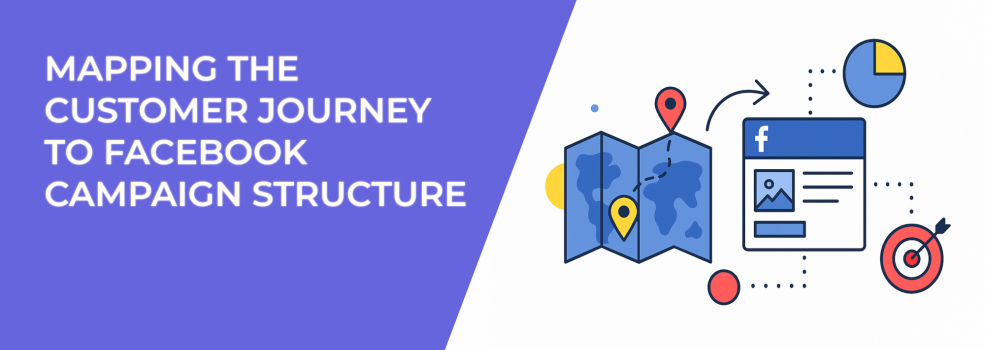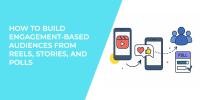Successful Facebook advertising begins with clarity — knowing exactly how potential customers move from initial contact with your brand to making a purchase or taking a desired action. This progression is the customer journey, and aligning it with your Facebook campaign structure is essential for efficiency and results.
When your campaigns reflect the different stages of this journey, your ads become more relevant, your targeting sharper, and your return on investment stronger.
Why the Customer Journey Should Inform Your Facebook Campaigns
Not all prospects are in the same place. Some are only just learning that your brand exists, while others are actively comparing options or ready to make a purchase. Using the same messaging for both groups can lead to wasted budget and missed opportunities.
By mapping the journey first, you can answer important questions before launching campaigns:
-
Where does my audience currently stand in their decision-making process?
-
What is the next logical action for them to take?
-
Which campaign objectives best support that progression?
A structured, journey-focused approach allows you to segment audiences effectively and measure performance with greater precision.
Core Stages of the Customer Journey
While the specifics vary across industries, the Facebook advertising journey generally consists of three main stages:
-
Awareness – Prospects discover your brand.
-
Consideration – They research, compare, and engage with your content.
-
Conversion – They complete a desired action, such as purchasing or signing up.
Your Facebook campaign structure should address each stage separately, with clear objectives and tailored creative.
If you want a detailed breakdown of how to connect each funnel stage into one cohesive strategy, read our Full Facebook Funnel Strategy guide.
Stage 1: Awareness Campaigns
Objective: Introduce your brand to a relevant audience that has not yet interacted with you.
Typical campaign objective here — Awareness. Audience targeting may rely on broad interest categories, demographic filters, or lookalike models. The messaging should focus on clarity, relevance, and distinctiveness — not an immediate sale.
Practical tips:
-
Test multiple creative formats to determine which generates the highest engagement rate.
-
Display brand identifiers early in the ad to maximise recall, especially in video content.
-
Optimise for lower CPM to extend reach efficiently.
-
Use campaign-level frequency caps to avoid oversaturation.
Well-executed awareness campaigns set the foundation for stronger performance in the consideration and conversion stages, ensuring audiences are primed for the next step in the journey.
For targeting in the awareness stage, understanding the strengths of custom vs lookalike audiences can help you structure campaigns more effectively.
Stage 2: Consideration Campaigns
Objective: Build trust, answer questions, and demonstrate value.
At this stage, campaign objectives such as Traffic or Engagement are effective. Targeting often includes remarketing to people who have engaged with your awareness ads, visited your website, or interacted with your content.
Practical tips:
-
Segment audiences by engagement depth — tailor messaging differently for someone who has watched a video in full versus someone who clicked on a single post.
-
Provide resources that educate and inform, such as guides, case summaries, or how-to content.
-
Incorporate testimonials or social proof to address common concerns.
-
Test value-based lookalike audiences derived from your highest-value customers.
Effective consideration campaigns bridge the gap between awareness and purchase intent, ensuring prospects have the confidence and information they need to progress to the conversion stage.
If your campaigns are underperforming in the consideration stage, you might be missing a dedicated middle-of-funnel plan. This MOF strategy guide covers how to build one that bridges awareness and conversions.
Stage 3: Conversion Campaigns
Objective: Drive the final action — whether that is a purchase, form submission, or sign-up.
Here, use an objective like Sales. Target audiences with demonstrated interest, such as those who visited product or service pages, initiated checkout, or joined your mailing list.
Practical tips:
-
Run A/B tests on offers to determine which incentive drives the highest conversion rate.
-
Ensure the landing page experience is fast, mobile-friendly, and consistent with the ad’s message.
-
Monitor frequency to prevent ad fatigue and avoid targeting recent converters unnecessarily.
-
Use dynamic product or service ads to show items or offers users have previously viewed.
Well-structured conversion campaigns capitalise on prior engagement, turning high-intent prospects into measurable results while maximising return on ad spend.
Effective retargeting is essential at the bottom of the funnel. Our step-by-step retargeting guide walks you through creating high-converting BOF audiences.
Structuring Campaigns Around the Customer Journey
Many advertisers find success in using a three-layered campaign structure that mirrors the customer journey:
-
Top of Funnel (TOF) – Broad awareness campaigns targeting cold audiences.
-
Middle of Funnel (MOF) – Consideration campaigns aimed at engaged prospects.
-
Bottom of Funnel (BOF) – Conversion campaigns targeting high-intent audiences.
Separating these layers allows for clear performance tracking. If one stage underperforms, adjustments can be made without disrupting the rest of the funnel.
Tip: Use sequential retargeting to deliver ads in a planned order — for example, showing an educational video after initial engagement, followed by a testimonial, and finally an offer.
Ensuring Progress Through the Funnel
Even a well-mapped journey can stall. Prospects may engage but fail to convert. Regular performance reviews help identify where drop-offs occur.
Consider these checks:
-
Is the creative relevant to the audience’s stage in the journey?
-
Are you showing them fresh, stage-appropriate content instead of repeating the same message?
-
Does the perceived value of your offer match the commitment you are asking for?
Small adjustments in creative, audience segmentation, or offer structure can often resolve bottlenecks.
Key Metrics for Each Stage
-
Awareness: CPM, reach, video views, engagement rate.
-
Consideration: CTR, cost per click, content views, lead completions.
-
Conversion: ROAS, cost per acquisition, conversion rate.
Set realistic benchmarks based on industry standards and use them to guide optimisation efforts.
Final Thoughts
Mapping the customer journey and aligning it with your Facebook campaign structure ensures your ads are relevant, targeted, and efficient.
When each stage has a clear purpose, tailored messaging, and defined audience segments, the result is a smoother path from first contact to conversion — and a higher return on every advertising dollar.

